#zsófi creates
Text
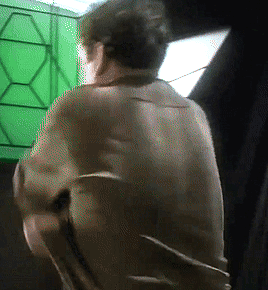



Of the decision to have O'Brien appear shirtless, director David Livingston commented, "I thought it was important. He represents the common man on the show, and common men, when they get sweaty, take off their shirts. And so what if he doesn't look like Fabio. He looks real, like a Human being. (…)"
On the prospect of being a sex symbol, Colm Meaney (Miles O'Brien) joked, "It would seem to me that there are far more likely candidates for it!" (x)
STAR TREK: DEEP SPACE NINE
season 2, episode 11
#star trek#trekedit#startrekedit#treksource#ds9edit#tvedit#trekdaily#scifiedit#tvfilmdaily#miles o'brien#colm meaney#ds9#zsófi creates#YOU ARE hot to me!!!!!!!!! YOU ARE THE HOTTEST MAN IN THE ST UNIVERSE!!!!!!!!!!!!!! TO MEEEE
2K notes
·
View notes
Text

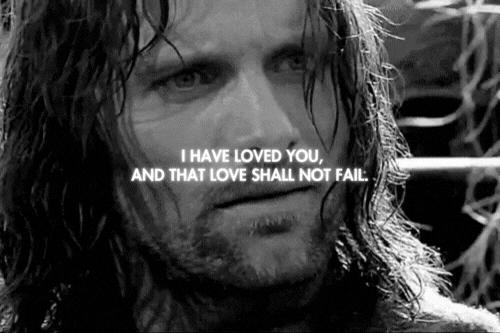
And so at length Éomer and Aragorn met in the midst of the battle, and they leaned on their swords and looked on one another and were glad.
‘Thus we meet again, though all the hosts of Mordor lay between us,’ said Aragorn. ‘Did I not say so at the Hornburg?’
‘So you spoke,’ said Éomer, ‘but hope oft deceives, and I knew not then that you were a man foresighted. Yet twice blessed is help unlooked for, and never was a meeting of friends more joyful.’ And they clasped hand in hand.
#lotredit#tolkienedit#lotr#filmedit#fantasyedit#aragorn#éomer#paleedit#palesources#palenet#szeptemblr#zsófi creates
221 notes
·
View notes
Text
Plastic words
"On vous laissera vivre et parler, à condition de vous boucher toute issue."
"You will be allowed to live and speak, but only after every outlet has been obstructed."
—Gilles Deleuze and Félix Guattari, Mille plateaux (A Thousand Plateaus)

Escape I (2018) by Rumi Zsófi
We are allowed to speak with plastic words.
This idea, "plastic words" or "plastic language," came to me after hearing the French expression "langue de bois" ("wooden language"). As a sort of oxymoron that contrasts the fluidity of language with the rigidity of wood, it describes an enunciation that is evasive of the issue or question at hand, whether through vagueness, distraction, abstraction, or the like. This may bring to mind any public speech from VP Kamala Harris (here's an example where she talks about technology and collective "engagement"). It could also involve the "academic" writing of ambitious, upper-class "intellectuals" such as Judith Butler who are trying to ride the final waves of identity politics (take this confused Butlerian article where she attacks the attackers of 'gender' in a contradictory, almost self-defeating way—"Battle not with monsters, lest ye become a monster," said Nietzsche). Such language is "wooden" in the sense that it painfully highlights the almost robotic stiffness of words, which, when used by a human being, should create intimacy or meaning, convince, inform, or rabble-rouse. Whatever the reason may be, language changes something. It doesn't just sit there. And yet the too-common language of today is so palpably alienating that one cannot help but notice how hardened it is. In being as rigid as a tree, such words harden (make harder) not just meaning, but community, truth, humanity.
Now, while the idea of "wooden language" is fine and good and useful, I find "plastic language" to be a much more seductive idea. I use "plastic" here pejoratively. In our global, neoliberal economic system in which every person is convinced to secure (or rather, is cornered into securing) their economic stability through "flexibility" (or, in other words, "plasticity") and where the onus is on the worker to maintain the illusory "work-life balance," being "plastic" is remunerated very handsomely. It's just that money comes at a price. You may have some extra cash, but within you is no longer a soul, but instead a growing mass of microplastics coursing through your veins.
A quick Google search revealed that a German linguist had already beaten me to the idea. Uwe Pörksen published a book called Plastic Words: The Tyranny of Modular Language in the 80s (translated into English in the 90s). He uses the word "plastic" to describe corporate- or government-bound terms like "progress," "development," or "strategy" which are completely malleable in terms of their meaning and thus can be used as a vessel (voire a Trojan horse) for whatever the speaker's agenda may be. These words have essentially no meaning on their own; they are plastic bags waiting to be filled, yet also waiting to rip once something too heavy is placed inside. Pörksen had almost named the book Lego Words, to capture the sense that these "words" are fabricated in such a way as to fit together nicely, but only with each other.
At my current job, the lingo of "DEIB" ("diversity," "equity," "inclusion," "belonging"—a murder of words borrowed from the business world) and "engagement" are abound, as they are in many educational institutions. These words constitute the Lego building blocks with which one is allowed to construct language. We are not allowed to play with anything that is incompatible with these blocks; I'd have to go play with other kids for that (who have much less leverage and probably couldn't afford to help me eat and pay rent). This is to make no value judgment of any actual meaning of these words. I believe in these ideas in an abstract sense, but the way that they circulate today is so perverted that I want to do nothing but distance myself from them and their current mainstream function.
It is beyond disheartening to feel myself and those around me to be wrapped in plastic (imagine a saran wrap mummy). Consider Simone Weil's point on communication: "Two prisoners whose cells adjoin communicate with each other by knocking on the wall. The wall is the thing which separates them but is also their means of communication. It is the same with us and God. Every separation is a link." (Gravity and Grace). This prison cell wall, however thick and rough it may be, still lends itself to be a vessel for human contact because it has structure. It is not malleable. It has a place, and it also has limitations. It can be moved and destroyed, but not easily, not without tools and concerted effort. Plastic cannot claim to be the same. In its saran wrap form, plastic allows us to be too close, too connected, too free; this can only mean that we are in fact none of these things. Instead, we're corpses, mummified and embalmed by plastic words, and by words that (are forced to) come out of our own mouths, nonetheless. Words that I use are becoming less and less mine. How can I talk about or realize what feels like true "belonging" or "diversity" to me without bringing to mind all of the hackneyed, commodified iterations of either one of those words? "Belonging" now means everything and nothing at once. What words remain meaningful that have yet to be colonized? Instead of planting flags and enslaving peoples like we used to do, now we hollow out, plasticize, render meaningless and unalive. All of this just so that we can talk “correctly” and accumulate capital in doing so. Whose permission are we waiting for to speak? What do we support by "subverting"? And what do we subvert by supporting?
0 notes
Text
“i hate this place, no one appreciates the stuff i make,” i say, as i'm already planing my new (ugly and cheap) gifset/edit
#😌 please just ignore me#i make these things mostly for myself/the pleasure of creating#just like i also only write because i like to and not because i want anyone's validation or whatever#zsófi rambles
2 notes
·
View notes
Text
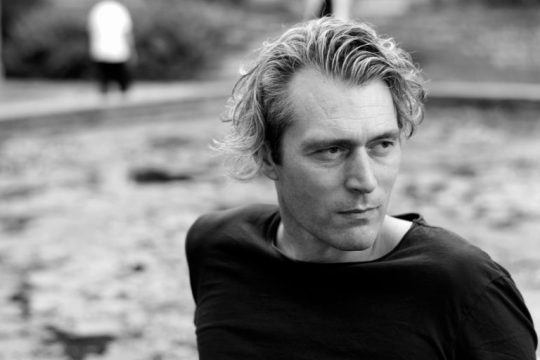
I came across this Declan Hannigan interview from a couple years ago and did a quick translation, enjoy.
How did you end up in Hungary?
I come from a little fishing village in Northern Ireland. I visited Budapest for the first time in 93, just after the regime change. I was traveling with friends and I was captivated by the city's beauty and culture. Then I ended up meeting a Hungarian girl in Dublin, even though there weren't many Hungarians living there at the time. I immediately started learning Hungarian and it wasn't long before we moved to Budapest. That was 15 years ago.
You're a writer, screenwriter, and actor, but in what order?
Actually I call myself a "filmmaker", that covers everything. I must have been around 6 or 7 when I asked Santa for a typewriter for Christmas. My mother was a tv editor, she's still writing novels to this day, so writing came naturally to me. I wrote my first play as a schoolkid. My grandfather and great-grandfather were fishermen, so was my father. My grandfather was a great storyteller, he created a tradition in the family. My affinity for directing probably comes from my father, since he was captain of his fishing boat.
How did you end up making movies?
I was 20 when my younger sister asked me to accompany her to an audition. Unfortunately she didn't get chosen, but I did. It was a Hollywood indie production (The Secret of Roan Inish) based on an old Irish tale about a seal-girl who turns into a beautiful human girl and must stay with you forever if you steal her skin... It was a great experience, that's where I met legendary cinematographer Haskell Wexler and director John Sayler, both of whom impressed me with their work. It was also there that I learned that a director can also be soft-spoken and nice, he had a huge impact on me. From then on my goal was to work in the film industry.
Is being nice that important?
Yes. Besides going to auditions as an actor and writing screenplays, I also work as a communication trainer. When my daughters ask me about my work, I tell them I teach people how to be nice to each other.
In contrast, you play quite the controversial character in Curtiz...
I admit that I find it more exciting to play villains. What I found interesting in this role is that despite seeming like a real American hero in the beginning who takes the poor girl under his wing, my character causes an unpleasant surprise in the end. I really hope the movie will be a hit. Casablanca is a classic, and it's really interesting that the movie was directed by a Hungarian. (The movie's about the making of Casablanca.) Not to mention that it's bilingual and black-and-white, which really creates a period atmosphere. It was a pleasure to work in such a familial environment, with so many talented people.
Are you more of a writer or more of an actor?
I enjoy acting, I like focusing on a single character, but that's only one part of filmmaking. Writing, however, is a lengthy process, it can take years to finish a project. I've been writing a sci-fi story for 5-6 years, for which I've been studying the work of Hungarian Harvard professor Albert-László Barabási. I think science is a part of culture, I'd like my movies to be educational.
You've also starred in a Hungarian series... and you've even written one?
There are a lot of opportunities here in Budapest. Of course I tend to get mostly English language offers. Shooting the AMC show The Terror was a great experience, but I also played an aging Swedish rock star on the Hungarian show 200 első randi (200 first dates). I can safely say the latter was the longest and hardest script of my life, because I had to speak Hungarian. [laughs] I wrote a pilot for RTL's contest called "A hentes" (The Butcher), starring Imre Csuja, Eszter Földes, and Éva Kerekes in the main roles. It's a noir thriller, I hope it premieres on tv soon.
You also star in some Hollywood productions...
I feel very lucky. I played Charlize Theron's driver in Atomic Blonde, and I recently starred in the Netflix show The Witcher. Swords, magical creatures... some say it could be a worthy successor of Game of Thrones. I like watching the pros work, I always learn a lot from them. My experience as a director often gives me an advantage in auditions. For instance, I deviated from the script at my Witcher audition and the director really liked it.
What can we know about your personal life?
I married Zsófi Lévai a year ago. We have very similar interests. She's a fashion designer focusing on the intersection of science, technology, and fashion. We really complement each other, she helps me a lot whenever I'm doing research for my writing. Also, her family is a huge motivating factor in my language learning. Sunday lunches are really difficult, between having to decipher my father-in-law's sophisticated speech and my brother-in-law's local slang. My daughters are 5 and 7 years old, at school and pre-school they just shrug and go: "Nah, Dad doesn't speak Hungarian" even though I've been trying even harder to learn since they were born. [laughs]
Where do you feel most at home?
I like living here. Whenever I travel for work and the city comes into view on the plane ride back, I'm filled with this familiar feeling that this is home. My daughters are here, this is where I've lived the most. My parents visit me often, my mother likes looking for inspiration for her novels in Budapest.
Any hobbies?
Besides my work being my hobby, I play the guitar, and like most writers, I read a lot. I also have this weird pastime, we take breakdancing classes with my younger daughter who's perpetually in motion. I enjoy it a lot more than running miles on the treadmill in a gym...
#dundy? in my backyard?#more likely than you think#declan hannigan#henry le vesconte#terror cast#the terror cast#the terror#the witcher#curtiz
39 notes
·
View notes
Link
🎭 Zsófi wrote a great article about innovative logo design trends. Check it out! https://uxstudioteam.com/ux-blog/logo-trends/?utm_source=social&utm_campaign=ownsocial
1 note
·
View note
Text
Ellen Klages has a keen eye for the perfect details
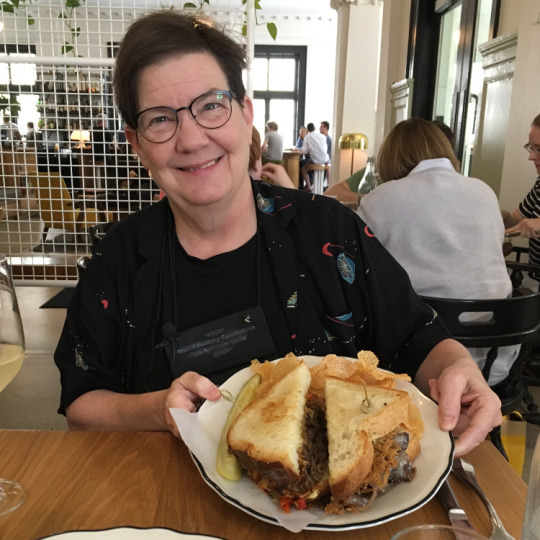
Photo: Scott Edelman
FFFRIDAY recommends “Echoes of Aurora” from Ellen Klages’ World Fantasy nominated WICKED WONDERS.
As with Passing Strange, Klages' eye for the perfect details, especially historical details, like the old-fashioned arcade machinery, really sells this story. The relationship moves fast, due to this being a short story, Klages does a good job of making me buy it. The mood is ultimately bittersweet, but not depressing. I liked that Jo wasn't super young and got to star in her own love story.

The Hungarian ZSÓFI KÜLFÖLDIÜL OLVAS praises WICKED WONDERS.
I could describe the author's novels in a volume with a marker: heart-warming. After repression, hatred, exclusion and other social problems (and of course not overlooked) and themes, it was a pleasure to read SFF writings where the biggest crises are a friend's loss or the capture of the longing baby. By describing these, they sound really insignificant conflicts, but Klages possesses magic that makes it credible from the age of five (eg, "The Education of a Witch") to teenagers who are growing up (eg Woodsmoke), actors and their problems, into his earlier stages of life.
In addition to the "childhood" themes, there are classic SFFs such as "Friday Night at St. Cecilia's" where two dice drift into two entourage students in a dangerous adventure, and in a "Gone to the Library" a parallel world is revealed in front of a little girl, while learning in the real world the "magic" of the numbers. In addition, there are adult stories such as "Echoes of Aurora", where a middle-aged woman returns to her childhood small town; "Goodnight Moons," in which a mother must decide what she is sacrificing for her child; and I can not leave the list of "The Scary Ham", which shows half-humorously, half-grotesque how it feels to clear up a lifetime of a felon after leaving.
Considering the full volume, we can read a variety of topics, in different approaches and genres. Not all of the writings were strong enough and memorable for me, but the overall picture is still more positive than negative. Most of the songs featured on the less fantastic items, I liked something like this: "The Education of a Witch", "Woodsmoke" and "The Scary Ham", towards the end of the book. Among the more adventurous stories, I enjoyed the stories of "Friday Night at St. Cecilia's" and "Gone to the Library", because they recalled my old, adventurous childhood readings, and Klages made these writings with great ideas (eg, at the end of a "parallel game" based on rules of the game or the magic of the numbers).
Translation from Hungarian courtesy of Google
Klages shares a meal with Scott Edelman in Episode 72 of Eating the Fantastic.
Our venue for this episode was the relatively new Whitfield at Ace Hotel. This was certainly the most picturesque setting for a meal I experienced in Pittsburgh, because the building which housed both hotel and restaurant was a century-old former YMCA.
We discussed why it took 40 years from the time she wrote the first sentence of her Nebula Award-nominated story “Passing Strange” to finish the tale, what a truck filled with zebras taught her about the difference between storytelling and real life, how cosplaying helped give birth to her characters, what she finds so fascinating about creating historical science fiction, why revising is her favorite part of writing, the reason she’s the best auctioneer I’ve seen in my lifetime of con-going, what she teaches students is the worst mistake a writer can make, how her collaboration with Andy Duncan gave birth to an award-winning novella, whether she still feels like “a round peg in genre’s polyhedral hole” as she wrote in the afterword to her first short story collection, and much more.

At TOR.COM, Klages suggests 5 Books About Women Who Make A Fuss.
Growing up, I was not a good girl. Good girls follow the rules, listen to their mothers, don’t make a fuss. They are quiet, polite, proper, and well-behaved. I rarely managed to pull that off. Branded a bad girl, I was sent to my room, grounded, and even—once or twice—threatened with expulsion from my stolid, conservative high school. Which was fine with me. Because…

Bad girls ask questions.
Modesty Blaise
by Peter O’Donnell
(Series, 1965-1996)
In 1985, I was confined to bed for two weeks after some reasonably minor surgery. The TV set was a large, bulky box, and was in the living room. I am not a good patient. I get fidgety and am easily bored. So my friend Rebecca Kurland—one of the Sunday Night Poker players—came over to visit on the first Monday of my confinement. She brought me a book.
“There are eleven of these,” she said, laying it on my comforter. “I will bring you one a day, but no more. Not even if you beg.”
Not gonna be a problem, I thought, looking at the cheesy, sex-pot cover. It didn’t even remotely interest me. Sigh. I had only known Rebecca a few months.
“One per day,” she said again. “No matter what.”
I smiled gamely and nodded. We chatted for a few minutes, then she went home.
That afternoon, I discovered Modesty Blaise. I devoured the book. Totally smitten. I was on the phone to Rebecca by 7:30. “Please!” I said. “Just one more, now?”
“Tomorrow,” she said. “Around lunch time.” And then, because I suspect she just couldn’t resist, she said, “I told you so.”
For more info about WICKED WONDERS, visit the Tachyon page.
Cover design by Elizabeth Story
#ellen klages#fffriday#echoes of aurora#wicked wonders#zsófi külföldiül olvas#review#hungary#scott edelman#eating the fantatic#tor.com#modesty blaise#passing strange
2 notes
·
View notes
Text
Hungarian slang & everyday language: #1 general stuff
Most things on this list are slang, but some are just words or expressions used commonly in everyday speech. It includes sample sentences, and, if possible, also the non-slang versions of those.
hali - hi
mizu - mi újság? - what’s up? (nowadays used rarer)
Mizu is also a name of a very well-known 2011 song. So well know that my classmate put it on in 2016 and 80% of us sang the first verse without a mistake. That doesn’t mean it’s good, it was popular back then, and it left so many deep scars that ppl still remember this. Here, go watch it: Mizu The lyrics: dalszöveg
mém, mémek - meme
szleng - slang
- Te egész nap csak mémeket nézel? - “Are you spending the whole day looking at memes?”
csávó, csávók - guy; non-slang version: fiú, fiúk
srác, srácok - guy; non-slang version: fiú, fiúk
csaj, csajok - girl, the female version of “guy”; non-slang version: lány, lányok
- Az a csávó tök jól tud táncolni! - “That guy can dance really well!”
- A srácokkal itt vagyunk a buszmegállóban, ti hol vagytok? - “We [the guys and me] are here at the bus stop, where are you (plural)?”
- Ismered azt a csajt, akinek lila haja van? - “Do you know that girl who has purple hair?”
non-slang versions:
- Az a fiú nagyon jól tud táncolni!
- A fiúkkal itt vagyunk a buszmegállóban, ti hol vagytok?
- Ismered azt a lányt, akinek lila haja van?
nőci, nőcik - woman; non-slang version: nő, nők
pasi, pasik - man; non-slang version: férfi, férfiak OR fiú, fiúk
pasi can also be used for teenage boys, BUT it highly depends on how old you are. For example, I think girls started calling teenage boys pasi at around 13 years. They also called them fiú, srác, etc, but the point is: calling teenagers that are approx. the same age as you pasi is fine. Calling a teenager pasi who is very younger than you is just weird.
faszi - guy , but fasz (penis) is a cuss word!, so be cautious when using it (unless you want to be rude, or come off as vulgar); plural form not really used; non-slang version: férfi
tag - guy , literally “member” (the club-member kind of meaning); plural form not really used; non-slang version: férfi
- Látod a nőcit, akinek kék táskája van? - “Do you see the woman who has a blue handbag?”
- Nem mindegyik pasi szereti a focit. - “Not every guy likes football.”
- A faszi azt se tudta, milyen évet írunk. - “The guy didn’t even know what year it was.”
- A mikulássapkás tagról beszélek. - “I’m talking about the guy with the Santa hat.”
non-slang versions:
- Látod a nőt, akinek kék táskája van?
- Nem mindegyik férfi szereti a focit.
- A férfi azt se tudta, milyen évet írunk.
- A mikulássapkás férfiról beszélek.
tesó, tesók - in this context: bro or dude, otherwise: sibling;
tesa, tesák - more vulgar version of bro or dude
haver, haverok - male friend; non-slang version: barát, barátok (male/gender-neutral friend) or barátnő, barátnők (female friend)
elmenni valahova a haverokkal - to go somewhere with male friends; non-slang version: elmenni valahova a barátokkal (but this one is gender-neutral)
haverkodni - to be chummy with someone, to get friendly with someone; non-slang version: barátkozni
összehaverkodni valakivel - to pal up with someone; non-slang version: összebarátkozni valakivel
bírni valakit - to like someone, can be platonic or romantic; non-slang version: kedvelni valakit (this one leans more towards the romantic feelings tho)
- Tesó, ezt tudnod kéne. - “Dude, you should know this.”
- Tesa, ezt te sem gondoltad komolyan! - “Dude, not even you could mean this seriously!”
- A haverod szeret olvasni? - “Does your friend like to read?”
- Este megyünk Pestre a haverokkal. - “We’re going to go to Pest tonight with the guys.”
- Bulikon nem szoktál haverkodni? - “Don’t you get chummy with someone during parties?”
- Tegnap haverkodtunk össze. - “We paled up yesterday.”
- Nem bírom az ilyen embereket. - “I don’t like people like this.”
non-slang versions:
- Ezt tudnod kéne.
- Ezt te sem gondoltad komolyan!
(side note: without the tesó/tesa address, these two can sound agressive)
- A barátod/barátnőd szeret olvasni?*
- Este megyünk Pestre a barátokkal.
- Bulikon nem szoktál barátkozni?
- Tegnap barátkoztunk össze.
- Nem kedvelem az ilyen embereket.
* barát/barátnő: in Hungarian these are used for both platonic and romantic relationships. if someone says to a guy “barátod” they usually mean “male friend”, if they say to him “barátnőd”, they mean “girlfriend”, and vice versa by girls. people have this “everyone is heterosexual" mindset, so the language is used like that too.
pasizni - to pick up guys
csajozni - to pick up girls
doesn’t 100% translate to picking up guys/girls, - it’s true that if valaki pasizik/csajozik they want to have a contact, but that’s not always the pick-up way. most of the time, but not always
[- Mit tervezel ma estére?
- Megyek a csajokkal pasizni./
Megyek a csajokkal csajozni./
Megyek a haverokkal csajozni./
Megyek a haverokkal pasizni./
“csajokkal” can be replaced with the following: lányokkal
"haverokkal” can be replaced with the following: fiúkkal; srácokkal
both can be replaced by names too, e.g.
csajokkal - Rebekáékkal/Liliékkel/Timiékkel/stb.
with Rebeka/Lili/Timi and the others
csajokkal - Rebekával, Lilivel és Timivel
with Rebeka, Lili and Timi
haverokkal - Norbiékkal/Boldiékkal/Laciékkal/stb.
with Norbi/Boldi/Laci and the others
haverokkal - Norbival, Boldival és Lacival
with Norbi, Boldi and Laci
“What did you plan for tonight?”
“I’m heading out with my female friends to pick up guys.”/
“I’m heading out with my female friends to pick up girls.”/
“I’m heading out with my male friends to pick up girls.”/
“I’m heading out with my male friends to pick up guys.”]
tök - very, a lot; adjective; lit.: pumpkin; non-slang version: nagyon
dumálni - to talk; non-slang version: beszélgetni
duma - bullshit*
*I don’t know how inapproriate English considers bullshit, but duma is actually the nicest way to say it in Hungarian.
- Ez tök jó! - “That’s so good!”
- Ezt a számot tökre szeretem. - “I like this song very much.”
- Most akkor dumálunk, vagy nem? - “So, are we going to talk or not?”
- Srácok, fejezzétek már be a dumálást! - “Guys, stop the talking!”
- Ez duma! - “That’s bullshit!”
non-slang versions:
- Ez nagyon jó!
- Ezt a számot nagyon szeretem.
- Most akkor beszélünk, vagy nem?
- Fiúk, fejezzétek már be a beszélgetést!
jó fej - lit. “good head”; meaning depends on your own definition of jó fej, it can mean someone is friendly, someone is funny, generally if someone says this about a person it means they like them (in a platonic way)
[- Milyen volt Zsófinál?
- Nem volt olyan rossz! Kiderült, hogy tök jó fej!
“How did you feel at Zsófi’s?”
“It wasn’t that bad! It turned out she’s cool!”]
cuki - cute; more commonly used by girls and women, boys and men use it in the same manner rarer (unfortunately they use it more in a mocking tone)
[- Kérsz csokit? Nekem nem kell.
- De cuki vagy! Igen, kérek.
“Would you like some chocolate? I don’t want it.”
“You’re so cute! Yes, I would like some.”]
- Tök cuki ez a ruha. - “This dress is very cute.
- Hogyhogy nem bírod azt a csajt? Tök cuki. - “How come you don’t like that girl? She’s very cute.”
- Az a srác tök cuki! - “That guy is very cute!”
non-slang versions:
[- Kérsz csokit? Nekem nem kell.
- De aranyos vagy! Igen, kérek.]
- Nagyon szép ez a ruha. - “This dress is pretty.”
- Hogyhogy nem kedveled azt a lányt? Nagyon kedves.
- Az a fiú nagyon jóképű!
gyökér, gyökerek - an adjective that’s a mixture of stupid, insane, and asshole; literally: root; will translate it in sample sentences as stupid for it to be easier to read
- A Meli az gyökér! - “Meli is stupid!”
- A Marci? A Marci az teljesen gyökér! - “Marci? Marci is completely stupid!”
- Ne legyél már ennyire gyökér! - “Don’t be so stupid!”
- De hogy lehet valaki ennyire gyökér? - “But how can someone be this stupid?”
tuti - surely; non-slang version: biztos/biztosan
tutira - surely; non-slang version: biztos/biztosan
Used:
“tuti, hogy” or “tutira”
“biztos, hogy” or “biztosan”
- Tuti, hogy ezt mondta? / - Tutira ezt mondta? - “Is this really what she said?”
- Tuti, hogy ide kellett jönni? / - Tutira ide kellett jönni? - “Is this really the place we were supposed to come to?”
non-slang versions:
- Biztos, hogy ezt mondta? / - Biztosan ezt mondta?
- Biztos, hogy ide kellett jönni? / Biztosan ide kellett jönni?
suli, sulik - school; non-slang version: iskola, iskolák
doga, dogák - test; non-slang version: dolgozat, dolgozatok
(not adding more school vocab because that’s for a separate post)
- Miért kell suliba járni, mikor konkrétan semmi értelme nincsen? - “Why is it mandatory to go to school when it literally makes no sense?”
- Remek, akkor németből is írunk dogát! - “Great, then we’ll have a German test too!”
non-slang versions:
- Miért kell iskolába járni, mikor konkrétan semmi értelme nincsen?
- Remek, akkor németből is írunk dolgozatot!
zabálni - to eat, vulgar; non-slang version: enni
kajálni - to eat; non-slang version: enni
vedelni - to drink, vulgar; non-slang version: inni
- Úgy zabál, mintha két napja nem evett volna. - “She’s eating as if she hadn’t eaten in two days.”
- Mikor kajálunk? - “When are we eating?”
- Nem kell ennyit vedelni! - “It isn’t necessary to drink that much!”
non-slang versions:
- Úgy eszik, mintha két napja nem evett volna.
- Mikor eszünk?
- Nem kell ennyit inni!
séró - hairstyle; non-slang version: frizura/haj
meló - work; non-slang version: munka
melózni - to work; non-slang version: dolgozni
btw our word meló comes from the Hebrew melacha.
- Jó a séród! - “Your hairstyle is great!”
- Milyen a meló? - “How’s work?”
- Bocs, nem érek rá, melóznom kell. - “Sorry, can’t make it, I have to work.”
non-slang versions:
- Jó a hajad! / - Jó a frizurád!
- Milyen a munka?
- Bocs, nem érek rá, dolgoznom kell.
The post was created around late 2017/early 2018. Depending on when you are reading it, it may be outdated.
#hungarian slang#this has been in my drafts since november#it took very long to make this#i kept on adding and adding new stuff to it and it got soo long#i literally changed my bio to say that i wont be making new posts#and then i actually get motivation to edit my drafts#reverse psychology works#original content
87 notes
·
View notes
Text
BARABÁS ZSÓFI - painter/festőművész
Willem de Kooning bőrébe bújva szívesen dumálna egyet Jackson Pollockkal, rutinszerűen minden reggel átsétál a tizenegyedik kerületből a Szabadság hídon át a Gerlóczy utcai műtermébe, kedvenc tárgya egy kis kalapács, amit Japánban vásárolt egy bolhapiacon, imádja Helsinkit no meg a sóskalevest.
She would love to be Willem de Kooning to be able to chat with Jackson Pollock, as her daily routine she walks over the Szabadság bridge every morning from the 11th district to her studio on Gerlóczy street, her favorite object is a little hammer which she bought at a flea market in Japan, she loves Helsinki and sorrel soup.

Zsófi asztala/Zsófi’s table.
Fotó: Rácmolnár Milán
Milyen típusú emlékek inspirálnak jobban: a jók vagy a rosszak?/What kind of memories inspire you the most: good or bad ones?
Inkább a jók. Persze, van hogy egy-egy nehezebb helyzet is megjelenik a vásznakon.
Mostly the good ones. However, there are times when a tougher situation also appears on the canvases.
Ha újjászülethetnél egy ma élő vagy már halott művész személyében, kit választanál?/If you could reincarnate as a living or dead artist, who would you choose to be?
Jól vagyok így, ahogy vagyok. De ha mégis választani kell, talán valamelyik amerikai absztrakt expresszionista bőrébe szívesen bújnék. Willem de Kooningként mondjuk átugranék dumálni egyet Jackson Pollockhoz.
I am good as I am. But if I really had to choose, I would probably be an American abstract expressionist. I would love to pop by at Jackson Pollock’s place for a chat as Willem de Kooning for instance.
Hogyan lendülsz túl az időszakos alkotói válságon?/How do you overcome a temporary artistic crisis?
Egyelőre nekem ilyen még nem volt. Inkább olyan van, hogy tartok egy kis rövid szünetet, mondjuk egy nagyobb menet, kiállítás után. Ilyenkor sokat úszom, barátokkal vagyok, kiugrom Bécsbe kiállításokat, könyveket nézni.
So far I haven’t experienced one. Sometimes I take a short break following an exhibition or a bigger project for instance. In these cases I swim a lot, I spend time with my friends, or I go to Vienna to see exhibitions and search for new books.
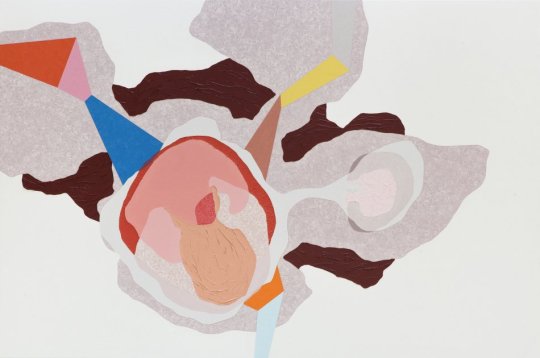
A létezés egy pillanata
Kinek mutatod meg először a legújabb alkotásodat?/Who sees your work first?
Azoknak, akik éppen a legközelebb állnak hozzám. Vagy csak egyszerűen felrakom Instagramra.
Those people who are the closest to me. Or I just upload it to Instagram.
Mi a legkedvesebb gyerekkori emléked?/What is your favorite childhood memory?
Apai nagyapámmal sárkányt csináltunk a Balatonon. Nagy meló volt és ő építészmérnök létére elég precízen dolgozott. Napokig csináltuk, én kb. 6-7 éves lehettem. Aztán felengedtük és eregettük a sárkányt. A telek egy bánya felett volt, alattunk a tó. Mikor már jó ideje kint voltunk azt mondta nagyapám most engedjük el. Soha nem fogom elfelejteni, ahogy a sárkány elrepült a Balaton felett. Fantasztikus érzés volt. Ilyen ember volt a nagyapám.
We made a kite with my grandfather from my father’s side at Lake Balaton. It was an enormous amount of work and being an architect, he worked extremely precisely. We were doing it for days, I was about 6-7 years old at the time. When it was done we were flying the kite. Our property was above a mine, and the lake was below. We were already outside for a while when my grandfather told me to let the kite go. I will never forget how the kite flew over the Balaton. It felt amazing. My grandfather was such a character.
Mit érzel, amikor egy másik művész a tiédhez hasonló munkát készít?/What do you feel when a fellow artist creates something similar to your work?
Általában nagyon drukkolok, hogy legyenek az illetőnek eredeti, önálló gondolatai, megoldásai.
I wish for them to have original, independent ideas, solutions.

Light space
Mit szeretnél, hogy miről emlékezzenek majd rád?/What would you like to be remembered by?
A festészetemről, arról, ahogy tanítottam, meg hogy milyen ember voltam. Milyen barát, társ, testvér.
My paintings, the way I taught, and the kind of a person I was. The kind of a friend, partner, and sibling I was.
Gyűjtesz valamit?/Are you collecting something?
Művészeti albumokból lassan mozdíthatatlan mennyiség van, de ez egyszerűen kell, vannak dolgok, amiket nem lehet mindig a könyvtárban megnézni, kell hogy meglegyen itthon. Rengeteg ecsetet vásárolok mindig. Meg van egy kis festmény gyűjteményem. Ezeket a képeket részben cseréltem kollégákkal, részben vásároltam őket. A fal, ahol egy része fent van, minden nap előttem van, minden nap megnézem őket.
I have tons of art albums, but I need them. There are things you cannot always find in libraries, you have to have them at home. I buy a lot of paint brushes. And I have a little painting collection. I partially interchanged these paintings with colleagues, and there are pieces I bought for myself. The wall, where I have most of them is always in front of me, I look at them every day.
Kedvenc budapesti pillanat?/Favorite Budapest moment?
Nyári estén egyik helyről a másikra menni barátokkal a belvárosban.
To go from one place to the other with my friends on summer nights in downtown Budapest.

Japán installáció
Van-e napi rutinod?/Do you have a daily routine?
Minden reggel átsétálok a 11. kerületből a Szabadság hídon át a Gerlóczy utcai műtermembe. Aztán itt kezdődik a munka. Vászonfeszítés, rajzolás, festés...
I walk over Liberty bridge from the 11th district to my studio in Gerlóczy street every morning. Then I start to work. Canvas stretching, drawing, painting...
Kedvenc tárgyad?/Favorite object?
Egy kis kalapács, amit Japánban vettem egy bolhapiacon.
A little hammer that I bought in Japan at a flea market.
Hogyan fogsz neki egy új munkának?/How do you get started on a new project?
Rajzokat készítek, majd ezek közül kiválasztom melyiket festem meg és mekkora méretben. Így indul a folyamat.
I make drawings, and then I decide which one of them I will paint and in what size. This is how the process starts.
Van egy jól körülhatárolható hangulat, amikor könnyebb számodra az alkotás?/Is there a particular mood that makes creating and working easier for you?
Nagyon hat rám, ha jó zenét hallgatok. Ez mindenképp segít a munkában, inspirál.
If I listen to some good music, it has a huge effect on me. This helps me in my work, it inspires me.

Inside and out
Sör vagy bor?/Beer or wine?
Bor, valami jó száraz fehér bor. Persze előfordul, hogy sörözünk, de ritkábban.
Wine. A good, dry, white wine. Sometimes we also grab some beers but that doesn’t happen that often.
Kutya vagy macska?/Dog or cat?
Nekem egyik sem, mert nem tudok állatot tartani a műteremben. Az meg, hogy otthon dekkoljon egész nap, vagy mindig vigyázzon rájuk valaki, ha utazom, ez nem az én műfajom lenne.
Neither, because I can’t have a pet in my studio. And to leave them behind for the whole day or ask someone to take care of them when I travel, that’s just not me.
Mit szeretnél kifejezni az alkotásaidon keresztül?/What would you like to express through your art?
Az érzéseimet, az elragadtatásaimat, a drámákat és örömöket, amiket megélek.
My emotions, my delightfulness, dramas, and happiness of my life.
Milyen a stílusod?/What is your style like?
Organikus és geometrikus absztraktnak nevezném.
I would call it organic and geometrical abstract art.
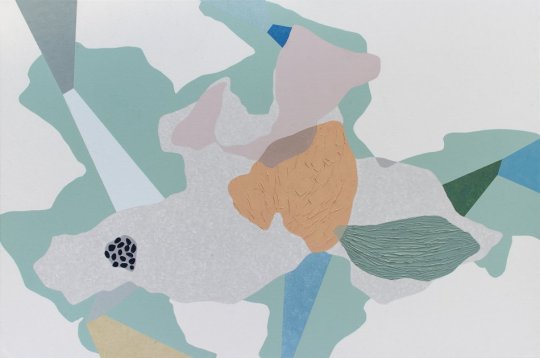
Öböl
Mi az, ami a leginkább feltölt?/What can recharge you the most?
Egy jó beszélgetés, úszás, utazás, koncert vagy színház élmény.
A good conversation, swimming, traveling, concert or theatre experience.
Kedvenc város?/Favorite city?
Helsinkit imádom. Ahányszor leszáll a gép, azt érzem, hogy megérkeztem.
I love Helsinki. Every time the plane lands there, I feel like I arrived.
Hol leszel 10 év múlva?/Where will you be in 10 years?
Remélem, eszméletlen izgalmas kiállításokat fogok csinálni. Festek és boldogan élek egy családban.
I hope I will make extremely interesting exhibitions. I will paint and will live happily in a family.
Kedvenc étel?/Favorite food?
Sóskaleves. Ez gyerekkoromból maradt meg, ritkán eszem, de mikor szezonja van, egy héten többször is.
Sorrel soup. This comes from my childhood. I rarely eat it but when it is the season for it, I have some more than once in a week.

Kedvenc évszak?/Favorite season?
Én mind a négy évszakkal rendben vagyok. Mindegyiknek megvan a hangulata, nem szoktam sopánkodni, hogy jöjjön már a nyár, vagy legyen már vége a kánikulának.
I like all four seasons. Each of them has its own atmosphere, I never complain to have summer again, or I want the hot spell to end.
Mi a legrosszabb tulajdonságod?/What is your worst characteristic?
Baromi türelmetlen vagyok.
I am very impatient.
Melyik korban élnél szívesen?/In which era would you prefer to live in?
Fél napokra bepillantanék, de élni nem szeretnék máskor. Az új-birodalmi Egyiptomban, a reneszánsz Firenzében, vagy a század elejei Párizsban szívesen körülnéznék.
I would visit for half days, but I wouldn’t want to live anytime else. I would like to look around in Egypt in the era of the New Kingdom, or Florence during the Renaissance, or Paris at the beginning of the century.
Mi az az alkotás, amit mindenképpen meg kell csinálnod, mielőtt meghalsz?/What is that specific artwork you have to accomplish before you die?
Nincsen ilyen. Folyamatosan dolgozom, ezek a képek azok, amiket meg akarok csinálni.
I don’t have that. I work continuously, these are the paintings I want to accomplish.
Ha egyetlen tanácsot kellene adni más, esetleg még kezdő tehetségeknek, mi lenne az?/If you could give one piece of advice to someone else, maybe to a beginner talent, what would it be?
Alázat, kemény, kitartó munka, szorgalom és hit. Röviden. Meg hogy akkor csinálja, ha örömet okoz az alkotás. Vagy ahogy én hívom: Meló.
Be humble, strong, work persistently, be diligent and have faith. To keep my advice short. Do it if creating makes you happy. Or how I call it: Job.
--------------------------------------
NÉVJEGY - Barabás Zsófi:
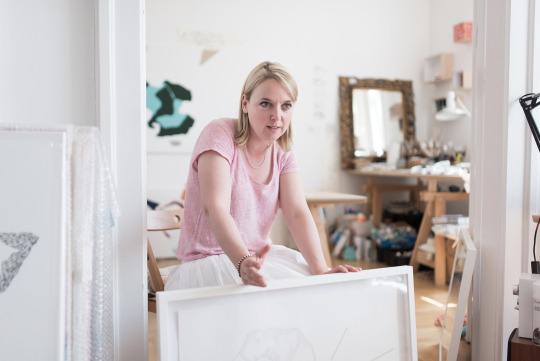
Fotó: Rácmolnár Milán
2004-ben diplomázott a Magyar Képzőművészeti Egyetemen, tervezőgrafika, vizuális nevelés és festő szakon. Jelenleg a Pécsi Tudományegyetem Művészeti Karának DLA képzésén vesz részt, ahol Keserü Ilona a mestere. Kutatói ösztöndíjjal 2009-ben Japánban tanult (Tokyo University of the Arts), ahol Sakaguchi Hirotoshi volt a professzora. Legutóbb a budapesti Faur Zsófi Galériában volt önálló kiállítása „A létezés pillanatai" címmel.
She finished her diploma in 2004 at the Hungarian University of Fine Arts and majored in graphic design, visual education, and painting. Currently, she attends a DLA curse at the University of Pécs Faculty of Music and Visual Arts and Keserü Ilona is her master. In 2009 she studied in Japan ( Tokyo University of Arts) with a research scholarship and Sakaguchi Hirotoshi was her professor. Recently, she had an independent exhibition at the Faur Zsófi Gallery with the title: “Moments of Being”.
////////////////////////////////////////////////////////////////////////////////
ZSÓFI MUNKÁI ITT TEKINTHETŐK MEG/CHECK OUT ZSÓFI’S WORK HERE:
Official website
Instagram
4 notes
·
View notes
Photo







MAACRAFT ‘17 - Campaign
Cooking is an experience. Either in the company of fruits and vegetables lying on the countertop, or while chatting with somebody, or else listening to your favourite songs. The scents fill up your home, and all of a sudden everybody will appear around the table. MAACRAFT’s new collection is connected to the world of kitchen and gastronomy. Redesigning everyday homewares to the fore of functionality and creating as simple forms as possible. All MAACRAFT products are handcrafted and made exclusively by natural materials in order to assure their sustained quality. This season our delicates supply contains herbs and spices from our domestic dryer, shredded by hand. These are also essential for cooking. We want you to surround yourself with objects, which are nice to take in hand, on which you can rely on and you are glad to take out from the drawer.
Model: Zsófi Mautner
Photo: Bernadett Fejér
1 note
·
View note
Text
Rules: answer the 19 questions and tag some amazing people you would like to get to know better. I was tagged by @ellenolenska!
i. name: Zsófia (Sophie)
ii. nickname: Zsófi or Zsó IRL, Fixa online.
iii. zodiac sign: Taurus or Dragon, depending on which zodiac you’re asking.
iv. height: 167 cm
v. orientation: Right now I’ll say ace lesbian.
vi. ethnicity: White - Hungarian nationality-wise, Polish with a lil’ German, Serbian and Slovakian actual ancestry-wise.
vii. favourite fruit: Peach, apricot cherry and sour cherry.
viii. favourite season: Autumn.
ix. favourite book series: The Lord of the Rings and Discworld.
x. favourite flower: I have two answers - one very cliché, one very niche. Roses and star-of-Betlehem.
xi. favourite scent: Ohhh maybe the scent you get after rain.
xii. favourite colour: red-orange-beige-yellow
xiii. coffee, tea, or cocoa: Tea, but I also need coffee to function.
xiv. average sleep hours: 10pm to 6am on weekdays, 10-11pm to 9am on weekends.
xv. cat or dog person: Cats, all the way. I know cats can be antisocial, unfriendly and difficult, but they need to prove it on an individual basis, whereas dogs need to convince me one by one that I can trust them. I’m scared of bigger dogs, most of them smell and drool... I just don’t like dogs very much.
xvi. favourite fictional characters: Oh my... Sherlock Holmes, Sam Vimes, Granny Weatherwax, Gandalf, Faramír, Enjolras...
xvii. dream trip: A trip from Iceland through Ireland, Scotland, Scandinavia, Finland to Russia, Moscow.
xviii. blog created: In 2013, I think?
xix. number of followers: 582
Tagging: @transcendental-signified, @oilan, @sovinly, @kcrabb88, @withinadream27... if you’d like, of course!
5 notes
·
View notes
Text


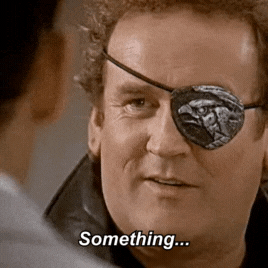

STAR TREK: DEEP SPACE NINE
4.10 | OUR MAN BASHIR
#star trek#trekedit#startrekedit#ds9edit#julian bashir#miles o'brien#ds9#deep space nine#falcon#jiles#o'brashir#zsófi creates#szeptemblr#OF COURSE im tagging u babe#anyways. the writers were INSANEEE for this
2K notes
·
View notes
Text

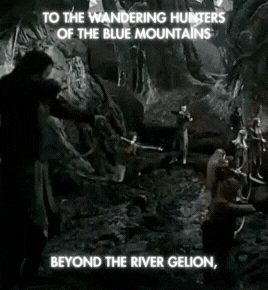
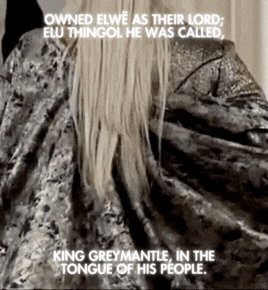

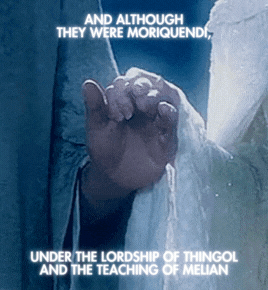

In Beleriand King Thingol upon his throne was as the lords of the Maiar, whose power is at rest, whose joy is as an air that they breathe in all their days, whose thought flows in a tide untroubled from the heights to the deeps.
#tolkienedit#silmedit#fantasyedit#elu thingol#elwe singollo#the silmarillion#tolkien#sindar#beleriand#zsófi creates
93 notes
·
View notes
Text
/
#literally anything i do is worthless and shitty and no one really cares about them#sometimes i make things bc i just can't Not make them so i give in to my desire to create but . there's literally no point in making them#i don't even know why i bother#im tired#zsófi rambles
0 notes
Text
Tagging game
Rules: Answer the 20 questions and tag 20 amazing followers you’d like to get to know better!
Tagged by: @rrrollling-thuunnndderr, thank you very much! <3
Name: Zsófia
Nicknames: Zsófi or Sophie
Zodiac sign: Libra
Height: I don’t know really... maybe 160 cm? I’m a hobbit-sized person
Orientation: Bi
Nationality: Hungarian
Favorite fruit: Watermelon
Favorite season: Spring and autumn, but autumn is better because of the warmth coloured leaves
Favorite book: HP and Lord of the Rings series
Favorite flower: Roses
Favorite scent: Vanilla and caramel
Favorite color: rainbow... but now I prefer burgundy and dark blue
Favorite animal: Tigers
Coffee, tea or hot cocoa: I hate milk, so just tea
Average sleep hours: Ten hours or more if I have time
Cat or dog person: I always think that I’m a cat person, but now I have two dogs :D
Favorite fictional character: I have a tons of... But because I’m sword-addicted now I’d prefer Yamatonokami Yasusada, Kogarasumaru, Taikogane Sadamune, Imanotsurugi and Izuminokami Kanesada in Touken Ranbu, and most of the YOI characters ^^
Number of blankets you sleep with: 2 or 3
Dream trip: Faroe Island, Svalbard, Iceland and most of the Middle East and Far East countries, especially India, China and Japan
Blog created: 2012 or 2013 I guess
Number of followers: 71
join if you want :) @natarinae @amethewombat @wendy-in-dreamland @my-cosplayers-world @szasza-chan @princessmimoza
4 notes
·
View notes
Link
🎭 Zsófi wrote a great article about innovative logo design trends. Check it out!
1 note
·
View note